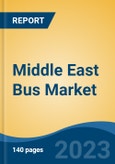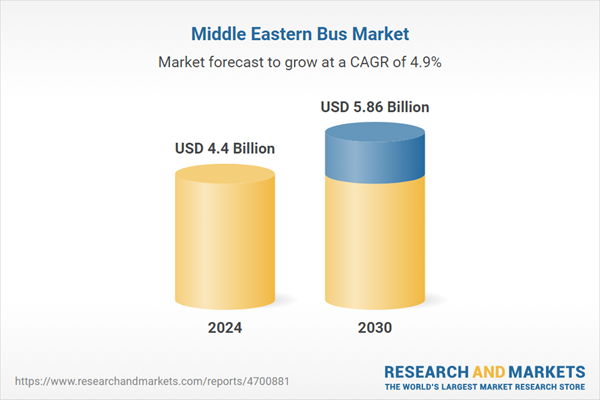Speak directly to the analyst to clarify any post sales queries you may have.
10% Free customizationThis report comes with 10% free customization, enabling you to add data that meets your specific business needs.
Key Market Drivers
Expansion of Urban Transport Infrastructure
The rapid advancement of urban transport infrastructure is a core growth catalyst for the Middle East bus market. Accelerated urbanization and mounting traffic congestion have highlighted the need for reliable, high-capacity transit alternatives. Buses offer flexibility and scalability, making them well-suited for diverse city layouts and varying commuter demands. Governments are actively integrating buses within multimodal transport systems alongside metro, rail, and last-mile options. Initiatives like dedicated bus corridors, smart traffic signal coordination, and express boarding solutions are improving transit efficiency, reducing delays, and enhancing passenger satisfaction - thereby driving increased public reliance on bus services.Key Market Challenges
High Capital Costs of Advanced Bus Technologies
A key challenge in the Middle East bus market is the substantial capital investment required for procuring next-generation buses, particularly those powered by alternative energy sources like electricity or CNG. These advanced models come at a significantly higher cost than traditional diesel buses, and they require supporting infrastructure such as charging stations and specialized maintenance facilities. Budget constraints among both public agencies and private fleet operators hinder rapid fleet modernization. While financial tools like leasing and subsidies exist to alleviate the burden, inconsistent availability and slow administrative processes can delay adoption and limit deployment at scale.Key Market Trends
Transition Toward Electrified Public Transport Fleets
The transition to electrified bus fleets is an emerging trend reshaping the Middle East public transport sector. Battery electric buses (BEBs), hybrids, and plug-in variants are gaining traction as governments pursue cleaner urban environments and reduced carbon emissions. These buses offer benefits such as quiet operation, lower maintenance needs, and improved energy efficiency - features well suited for short, high-frequency city routes. Technological improvements in battery capacity and charging speed, along with government mandates for low-emission procurement, are accelerating this shift. Manufacturers are expanding their electric offerings to meet the demand for sustainable, future-ready transit solutions across urban centers.Key Market Players
- Toyota Motor Corporation
- Mercedes (Daimler AG)
- Isuzu Motors Ltd.
- Mitsubishi Fuso Truck and Bus Corporation
- Zhengzhou Yutong Bus Co. Ltd.
- Ashok Leyland Ltd.
- Tata Motors Ltd.
- Xiamen King Long United Automotive Industry Co. Ltd.
- AB Volvo
- MAN Truck & Bus
Report Scope:
In this report, the Middle East Bus Market has been segmented into the following categories, in addition to the industry trends which have also been detailed below:Middle East Bus Market, By Application:
- Transit Buses
- Motor Coaches
- School Buses
- Others
Middle East Bus Market, By Fuel Type:
- Diesel
- Petrol
- CNG
- Electric
Middle East Bus Market, By Seating Capacity:
- Up to 30 seats
- 31-50 seats
- More than 50 seats
Middle East Bus Market, By Length:
- Up to 8 m
- 8 m to 10 m
- 10 m - 12 m
- Above 12 m
Middle East Bus Market, By Country:
- Saudi Arabia
- UAE
- Iran
- Israel
- Qatar
Competitive Landscape
Company Profiles: Detailed analysis of the major companies present in the Middle East Bus Market.Available Customizations
With the given market data, the publisher offers customizations according to the company’s specific needs. The following customization options are available for the report.Company Information
- Detailed analysis and profiling of additional market players (up to five).
This product will be delivered within 1-3 business days.
Table of Contents
Companies Mentioned
- Toyota Motor Corporation
- Mercedes (Daimler AG)
- Isuzu Motors Ltd.
- Mitsubishi Fuso Truck and Bus Corporation
- Zhengzhou Yutong Bus Co. Ltd.
- Ashok Leyland Ltd.
- Tata Motors Ltd.
- Xiamen King Long United Automotive Industry Co. Ltd.
- AB Volvo
- MAN Truck & Bus
Table Information
| Report Attribute | Details |
|---|---|
| No. of Pages | 135 |
| Published | July 2025 |
| Forecast Period | 2024 - 2030 |
| Estimated Market Value ( USD | $ 4.4 Billion |
| Forecasted Market Value ( USD | $ 5.86 Billion |
| Compound Annual Growth Rate | 4.8% |
| Regions Covered | Middle East |
| No. of Companies Mentioned | 10 |









